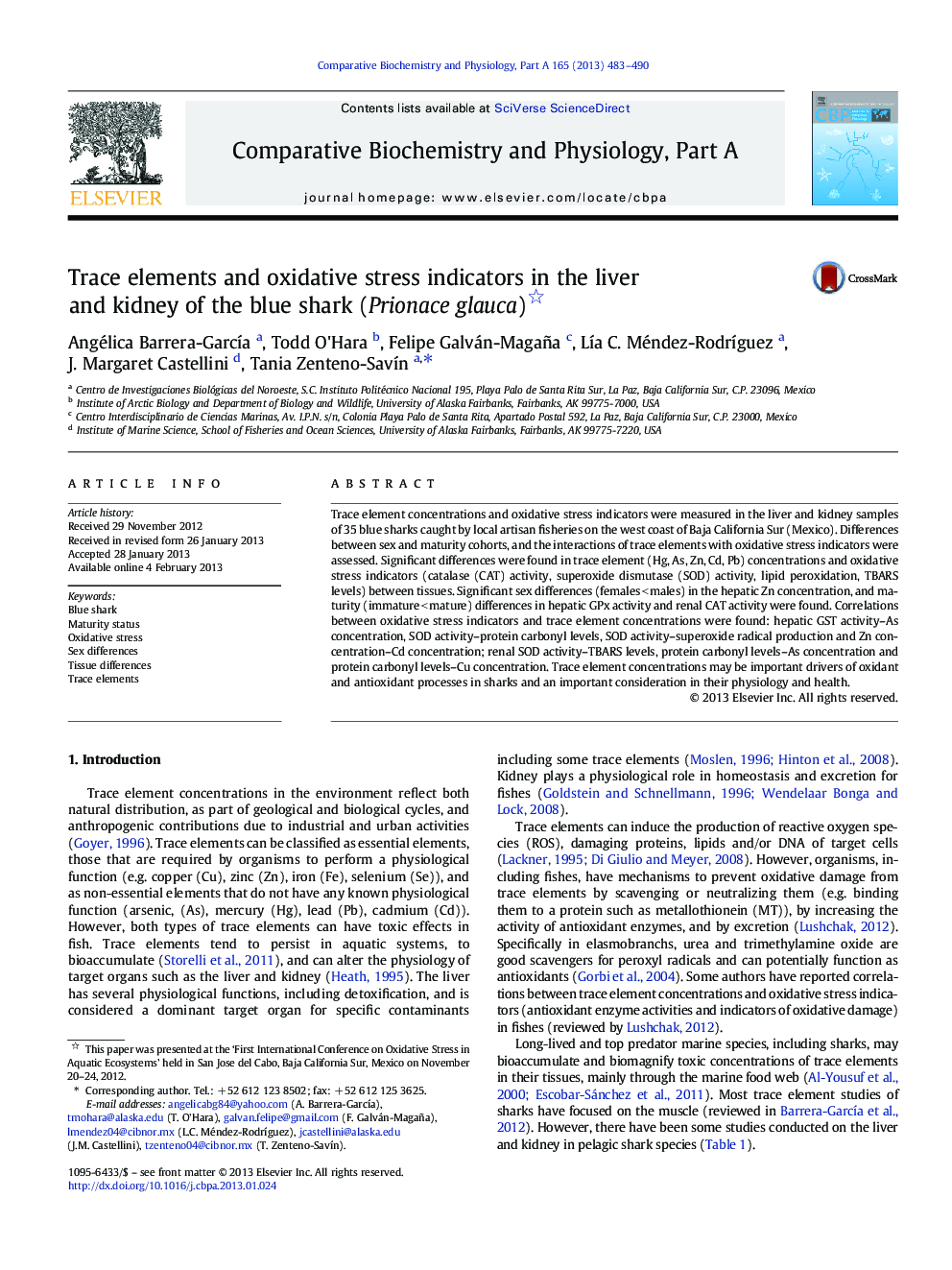| Article ID | Journal | Published Year | Pages | File Type |
|---|---|---|---|---|
| 1972233 | Comparative Biochemistry and Physiology Part A: Molecular & Integrative Physiology | 2013 | 8 Pages |
Trace element concentrations and oxidative stress indicators were measured in the liver and kidney samples of 35 blue sharks caught by local artisan fisheries on the west coast of Baja California Sur (Mexico). Differences between sex and maturity cohorts, and the interactions of trace elements with oxidative stress indicators were assessed. Significant differences were found in trace element (Hg, As, Zn, Cd, Pb) concentrations and oxidative stress indicators (catalase (CAT) activity, superoxide dismutase (SOD) activity, lipid peroxidation, TBARS levels) between tissues. Significant sex differences (females < males) in the hepatic Zn concentration, and maturity (immature < mature) differences in hepatic GPx activity and renal CAT activity were found. Correlations between oxidative stress indicators and trace element concentrations were found: hepatic GST activity–As concentration, SOD activity–protein carbonyl levels, SOD activity–superoxide radical production and Zn concentration–Cd concentration; renal SOD activity–TBARS levels, protein carbonyl levels–As concentration and protein carbonyl levels–Cu concentration. Trace element concentrations may be important drivers of oxidant and antioxidant processes in sharks and an important consideration in their physiology and health.
